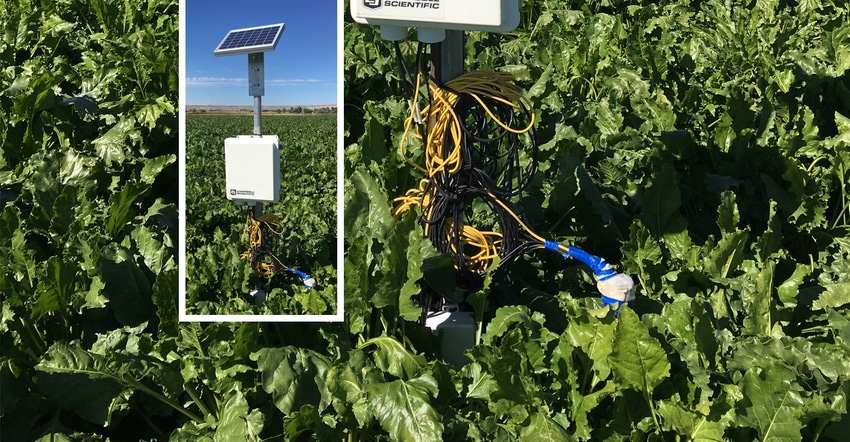
When Vivek Sharma left the extensive irrigated lands of Nebraska to take on his new role in Wyoming, he saw a lot of opportunities for research. In 2017, his research projects were already aiming to help farmers enhance their water use. Sharma is an assistant professor of agronomy and irrigation in the Department of Plant Sciences at the University of Wyoming.
“When I came to Wyoming, what I saw was that only a few farmers were using soil moisture sensors,” he says. And in fact, there wasn’t a big installed base of manufacturers or dealers serving the market, either. So Sharma got to work and invited a number of manufacturers and dealers from other states to Wyoming to talk about this technology.
Managing crop water is a growing concern not only for the environment, but also for helping producers maximize their returns. Overwatering is common in many areas, not just Wyoming, but the addition of moisture sensors could help.
Sharma invited several manufacturers to come to Wyoming to discuss their technology, and for 2017 he installed 15 different types of soil moisture sensors for research. Sharma and his students installed moisture sensors near Powell in the northwest part of the state, and in Lingle, in the southeast quarter of Wyoming. The aim was to collect information that farmers can use in the future.
“Soil moisture sensors work differently in different soil types,” Sharma explains. “We’re working to develop a set of calibrations for Wyoming.”
He’s quick to point out that even if not exactly calibrated for an area, a sensor still provides useful information. For example, if you have clay soil — which holds about 35% moisture at any given point but the sensor says it’s holding 45% — that’s simply a calibration issue. “Yet, the trend information from that sensor is still valuable,” he says.
The good news for producers is that for 2017, Sharma says he was able to capture an excellent data set for use in future calibrations. “We want a second year, because conditions change, to make sure what we have is useful, but we had a good first year,” he says.
Rising interest in sensors
In 2017, Sharma conducted three field days to give farmers a look at soil moisture sensors. Two were in Powell the third in Lingle, and the response was strong. “What we found is that farmers want to use those sensors in their agricultural operations, but they don’t have a strong market available,” he notes.
He added that in Nebraska and other Midwestern states, a farmer can go to any irrigation dealership and have a choice of sensors; in Wyoming, that is currently not the case. It’s an opportunity for dealers seeking more ways to serve the irrigation market. “The hard part is finding a dealer,” he says.
The other challenge is the cost of connectivity. Cellular and satellite communication are currently the main choices, though Sharma references innovative wireless solutions that may offer potential. There are other newer technologies coming to market, too, which may have potential, but Sharma has learned that starting out a little slower can be better.
“I believe that it’s not always a good idea to take the advanced approach too early,” he says. “We want to help farmers gather information in their fields, and then we can move on from there.”
With several manufacturers looking at Wyoming as a potential market, chances are some dealers will add sensors to their product lines.
The key is that farmers tend to overwater if they don’t have some management tool to give insight into irrigation tactics. Sharma says he has seen that happen in Wyoming, too, where farmers equate getting plenty of water on that field as a way to maximize the crop. That may not always be true, and Sharma says he’s looking at that fact in some other research. There is a way to maximize yield and minimize water use. Of course, that starts with a working, well-placed sensor.
About the Author(s)
You May Also Like




